Hello
I want to use the chamfer function to " break " only the corners of a prism, but I can't select all my corners at the same time. You have to select a corner, validate the function, recall the function, select a corner ect...
Is there another way or is it me who misuses the function?
Thank you
Fred
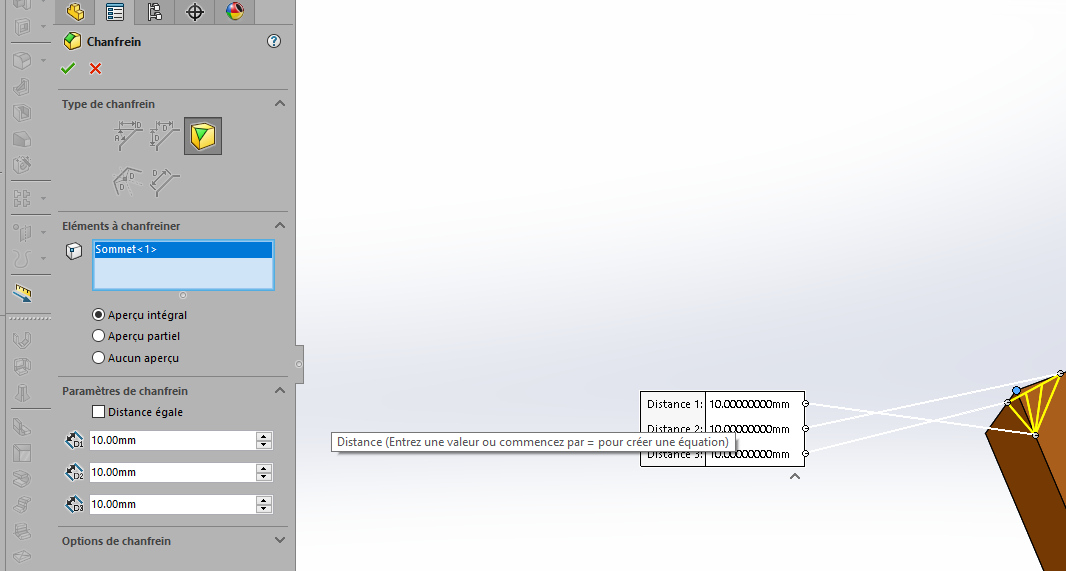
Hello @fred ,
Just out of curiosity, I tried on my own...
- Function call, multi-select attempt with CTRL pressed, → does not work
- multi-select vertices with CTRL pressed and call the function:

No comment...
Totally agree!
We can do this with non-consecutive edges but not with vertices, the calculation must be a little more complicated.
If you do it often, maybe dig into the macro side...
That's because it would be too quick and way too easy! ![]()
Hello
A practical and economical way to chamfer the vertices of relatively simple volumes:
chanfrein_sommets. SLDPRT (155.7 KB) (SW2020)
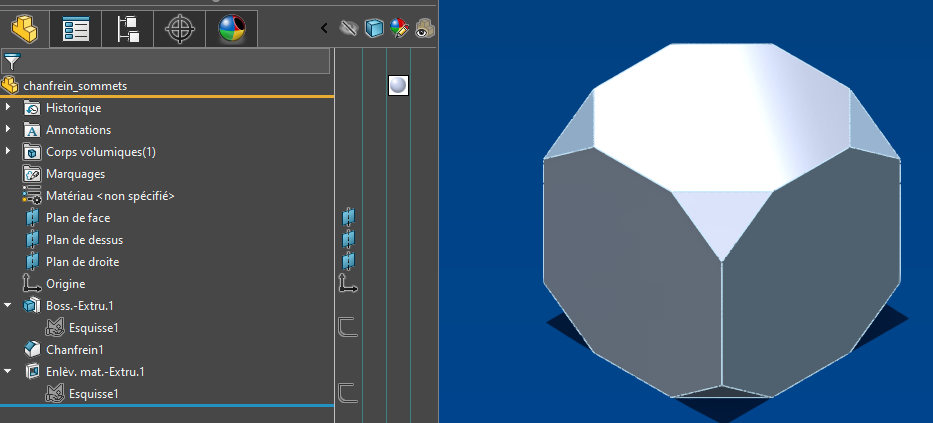
We draw the sketch of the main volume (here 50x50 cube), then we draw at 45° the secondary sketch that will be used for the chamfer:
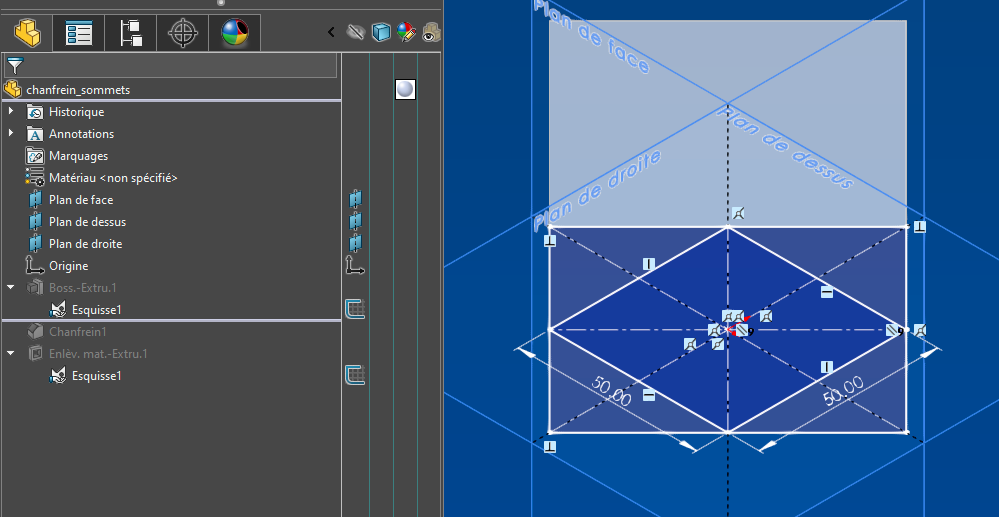
We apply an extrusion with the secondary sketch in " selected contours":
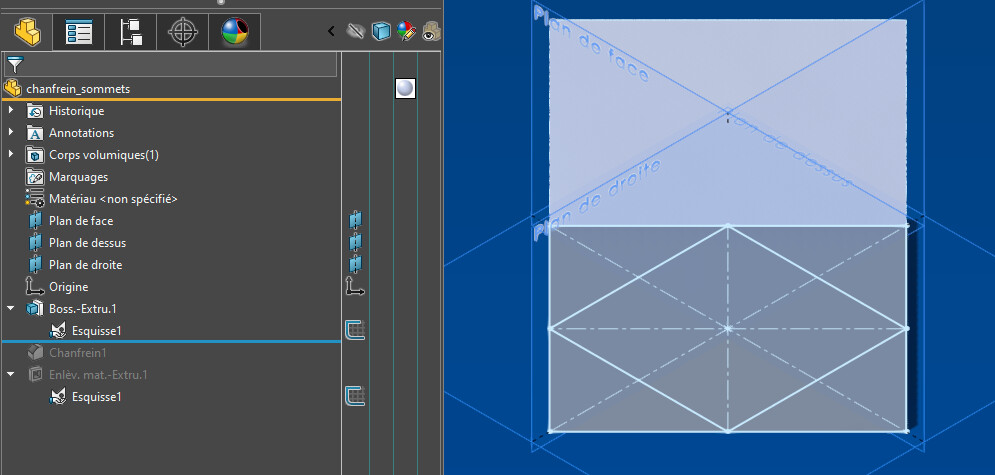
The chamfer is applied to the faces or edges that interest us (here the upper and lower faces):
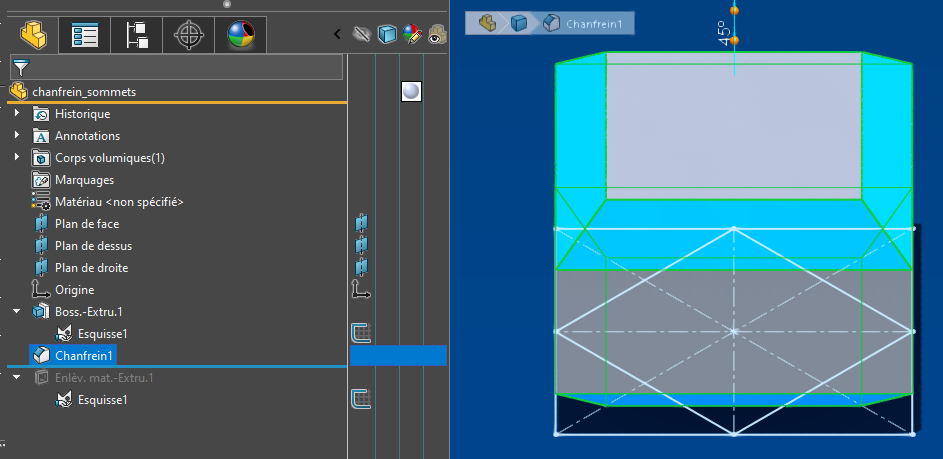
Finally, we apply a material removal, with the main sketch as the outline, by checking " Toggle side to remove material ":
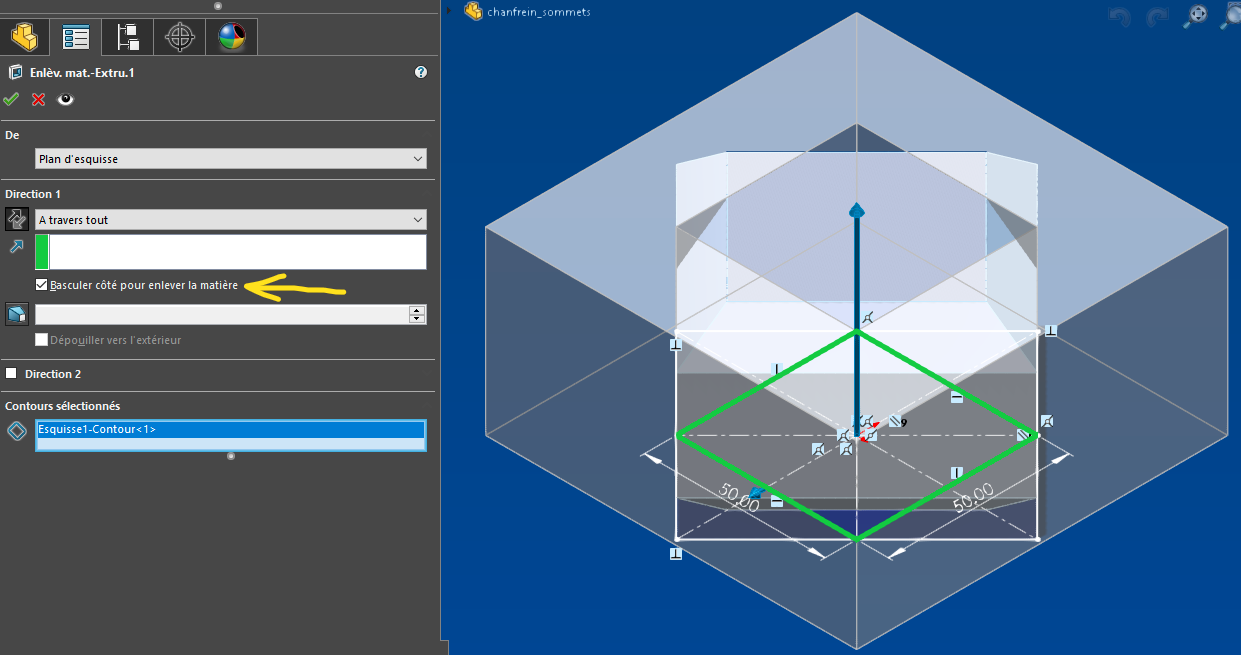
And here are 8 chamfered vertices with a single chamfer function:
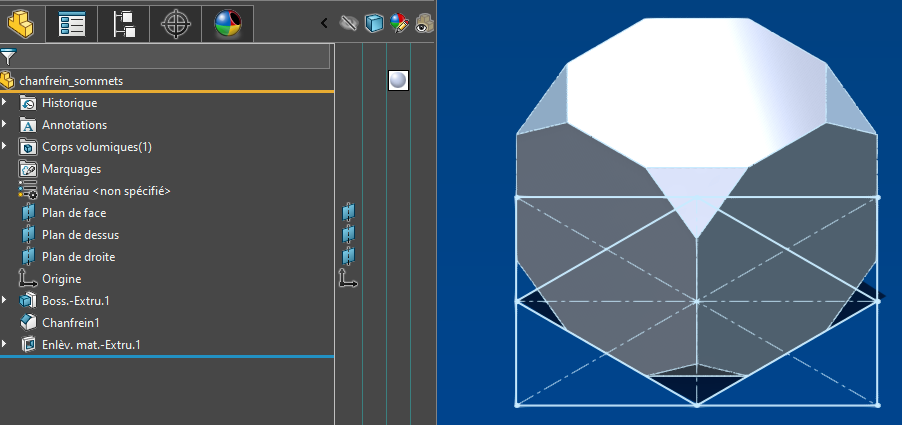
The same principle applies to other volumes, such as a triangular prism:
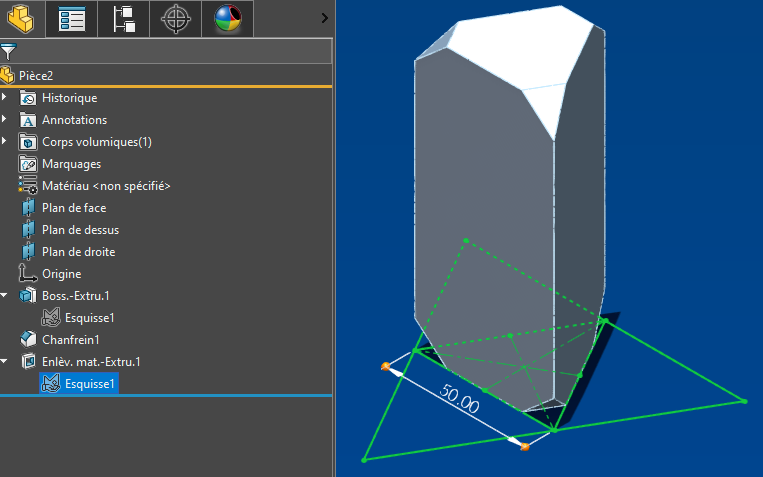
Simpler (more accessible by the next user in case of modification) in my opinion to manage this with repetitions and/or symmetries:
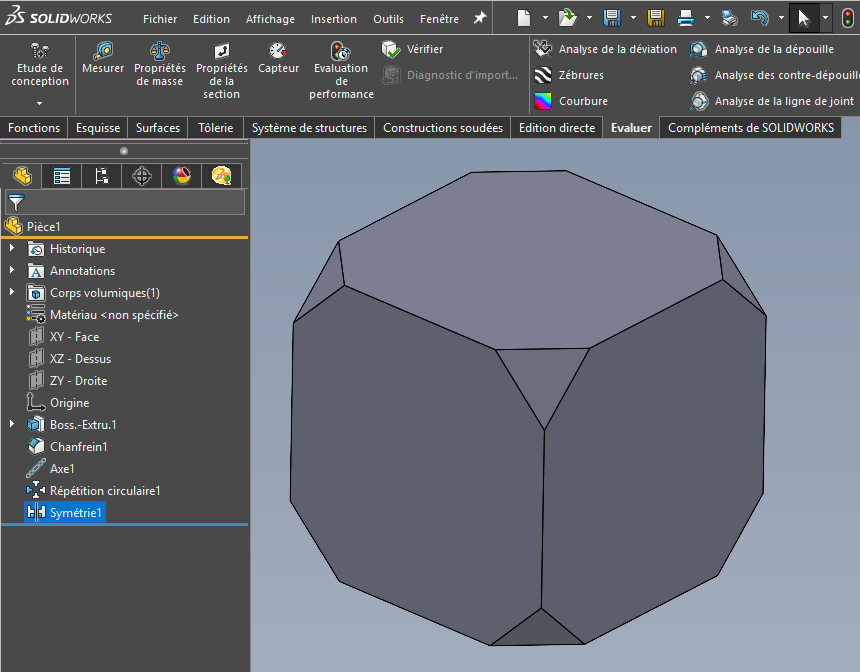
With a small bug by the way... For a prism, the symmetry of a symmetry is incomplete:
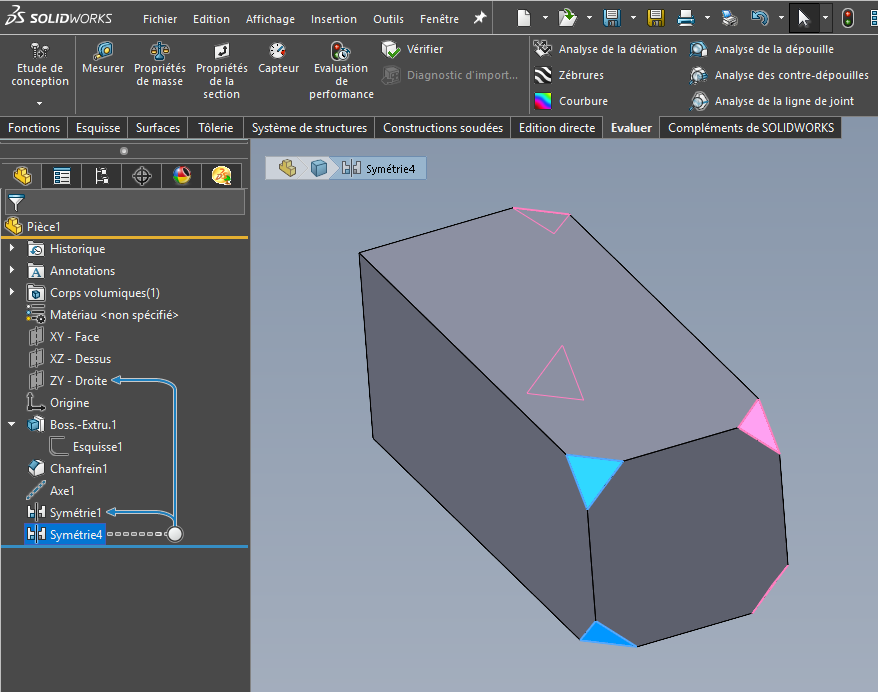
Hello @Silver_Surfer
I had thought about symmetry but...
I think that the 2 are equal in terms of accessibility; On my method, the sketches are constrained, whether you change the dimension or the chamfer, everything follows. Unless you think of other modifications?
In addition to keeping a tree uncluttered, the advantage of my method is that you can easily choose whether a top should be chamfered or not. Useful for " variable " and non-symmetrical chamfers:
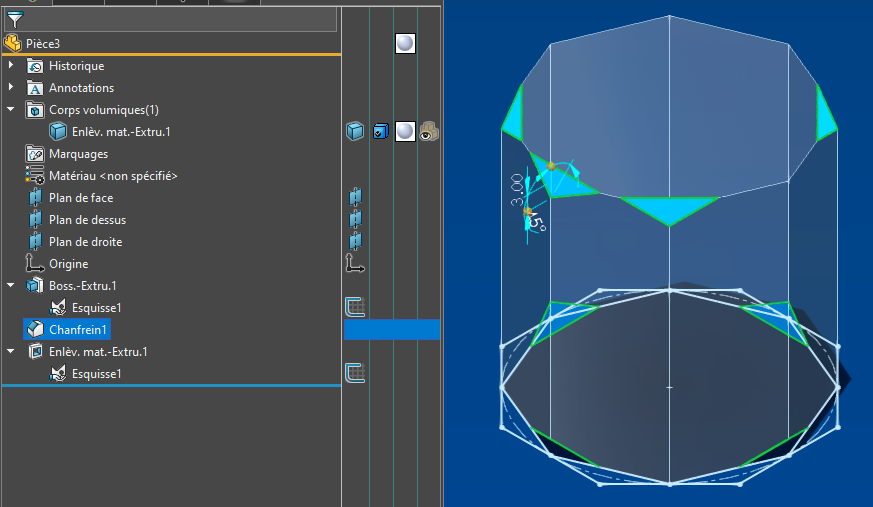
I would say that depending on the case, repetition/symmetry may be enough, but the removal of material is more flexible.
Even if neither of the 2 is worth a true multi-vertex chamfer...